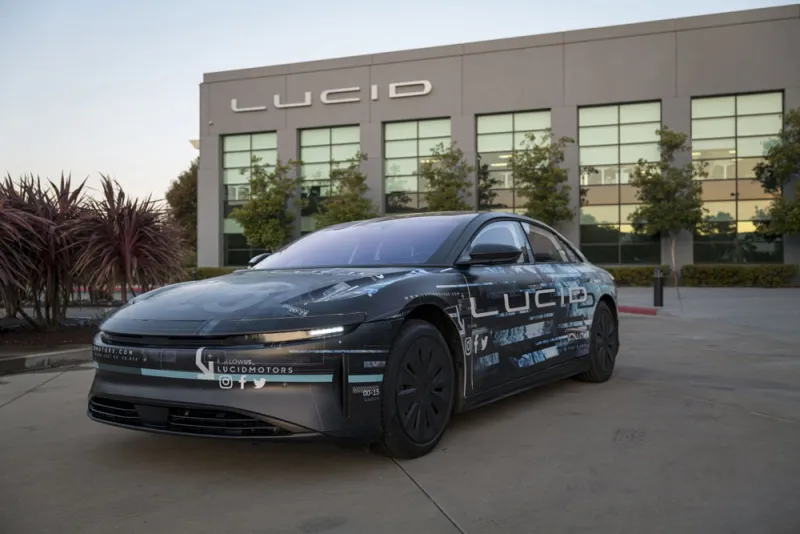Dealmaker Michael Klein’s fourth SPAC was a symbol of the mania around blank check companies when it announced a merger agreement with electric vehicle maker Lucid Motors in mid-February.
Now it’s a symbol of the fall — and the most heavily shorted SPAC, or special purpose acquisition company, in the market.
Rumors of the Lucid deal sent the SPAC soaring earlier this year at the peak of the frenzy. But Klein’s SPAC, Churchill Capital Corp. IV, quickly began to crash — falling from a high of $65 to around $20 Friday — and took the rest of the SPAC world with it.
Since the SPAC market’s peak on Feb. 17, just days before the Lucid merger was confirmed, the SPAC IPOX Index is down about 23 percent, signaling a SPAC bear market.
Not surprisingly, Churchill IV has become the most heavily shorted SPAC among those that have not yet consummated mergers with partners, according to a new report from S3 Partners, which tracks short selling.
Churchill IV shorts are now worth over $603 million, or almost 16 percent of the outstanding shares, according to S3 Partners.
And as the stock has continued to fall, short sellers are cleaning up. They’ve made almost $250 million over the past 30 days, a marked-to-market gain of more than 34 percent.
A spokesperson for Churchill declined to comment.
At $2.07 billion when it went public last summer, Churchill IV was the second largest SPAC, following Bill Ackman’s Pershing Square Tontine Capital, which raised $4 billion and has yet to announce a merger partner.
[II Deep Dive: SPAC Kingpin Michael Klein Is Still Winning, Despite Stock Swoon]
One reason market participants have cited for Churchill’s rapid fall from grace was its huge market cap. When the Lucid deal was announced Feb. 22, the implied market value of the combined companies was roughly $57 billion, the Wall Street Journal reported. That made it more valuable than Ford Motor Co.
And that value did not even include Churchill’s lucrative warrants. Investors in SPAC IPOs, which are primarily hedge funds, are typically awarded one third of a warrant per share. In this case, they received something much richer: one warrant per share.
SPAC warrants have since come under more scrutiny. In a panel discussion held by the Securities and Exchange Commission’s investor advisory committee on March 20, New York University professor Michael Ohlrogge explained how warrants bleed money from the company when the merger is completed. Instead of having $10 per share from the IPO — the offering price of most SPACs — the SPAC ends up contributing only $6.40 per share, he said. That creates significant dilution for new shareholders, contributing to the SPAC’s historically poor performance post-merger, he explained.
Ohlrogge was one of three authors of an October report, “A Sober Look at SPACs,” that outlined the warrants issue in one of the most scathing academic critiques of the new SPAC boom.
“We find that commentators’ claims that SPACs deliver greater price and deal certainty compared to IPOs are overstated. One reason, among others, is that they do not fully appreciate the sources of SPAC dilution and as a result do not recognize that the extent of SPAC’s dilution is not known until the time of the merger, when shareholders have decided whether to exercise their rights to redeem their shares,” wrote Ohlrogge, and his fellow authors, Michael Klausner, a Stanford law school professor, and Emily Ruan, a Stanford 2020 graduate.
Less than a month after Ohlrogge’s comments before the SEC, the regulator issued new accounting guidance for SPAC warrants that would require them to be considered liabilities, not equity instruments — potentially throwing SPAC financials into disarray.
“These warrants, which are usually issued to early investors and SPAC sponsors/management, would need to be marked-to-market, and would affect the quarterly financial reporting of existing SPACs,” explained Ihor Dusaniwsky, managing director of predictive analytics at S3 Partners, in his new report.
“The uncertainty of the SPAC regulatory landscape has proved to be a headwind for both existing and new SPAC issuances,” he added.
That’s good news for SPAC short sellers. Overall, they are up $501 million, or 16.92 percent, in net-of-financing mark-to-market profits over the past 30 days, according to S3 Partners’ analysis of 885 SPACs, including equities and warrants.
Over the past 30 days, the short selling of SPACs has increased by $265 million to a total $2.7 billion. But given the stocks’ declines, the market value of the SPAC shorts has fallen by $460 million, according to Dusaniwsky.
“As the value of their short SPAC holdings were decreasing, short sellers were generating mark-to-market profits and continuing to sell into the price weakness and increasing their short positions,” he wrote. “The sector wide weakness made most SPAC shorts profitable with only 28 percent of the securities in our SPAC population producing red (unprofitable) numbers.”
The two most profitable shorts were also the two most shorted. While the Churchill SPAC was the biggest, and most profitable, short, it was followed by Chamath Palihapitiya’s fifth SPAC, Social Capital Hedosophia Holdings V, which has announced plans to merge with Social Finance.
The stock prices of both are still way above their offering prices. Churchill IV still has the third-highest return since IPO of SPACs that have announced a target, with an ROI of 121.1 percent, according to SPAC Insider, while Social Capital V has gained almost 72 percent since its debut.
Both came to market last year.
Following the recent collapse in SPAC prices, however, SPAC issuance has ground to a halt, and most of those issued this year have been trading below their net asset value, according to SPAC Insider.
Even so, some $100 billion has already been raised by SPACs in 2021 — even higher than the record $83 billion raised last year.







